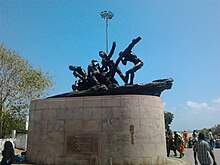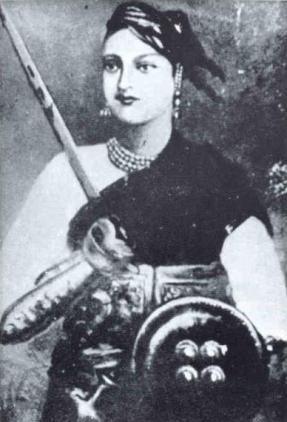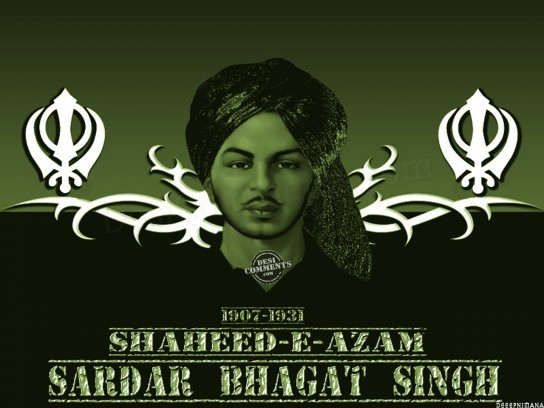Iron Man of India
NAME : Sardar Vallabhbhai Jhaverbhai Patel
BIRTH : 31 October 1875
DEATH : 15 December 1950
Sardar Vallabhbhai Patel the iron-man of India was born on 31st October, 1875, in a small village in Nadiad. His father Jhaverbhai Patel
was a simple farmer and mother Laad Bai was a simple lady. From his
childhood itself, Patel was a very hard-working individual. He used to
help his father in farming and studied in a school at N. K. High school, Petlad.
He passed his high-school examination in 1896. Throughout school he was
a very wise and intelligent student. Inspite of poor financial
conditions his father decided to send him to college but Vallabhbhai
refused. Around three years he stayed at home, worked hard and prepared
for the District Leader's examination, hence passing with very good
percentage.
Sardar Vallabhbhai Patel is a
historical figure who moves you to tears. Mostly these are tears of joy,
for he achieved a thrilling Indian unity. Yet some are tears of pity,
for the Sardar suffered and sacrificed much. Sardar Patel
hated to work for anyone especially the Britishers. He was a person of
independent nature. He started his own practice of law in a place called
Godhara. Soon the practice flourished. He saved money, made financial
arrangement for the entire family. He got married to Jhaberaba. In 1904,
he got a baby daughter Maniben, and in 1905 his son Dahya was born. He
sent his elder brother to England for higher studies in law. In 1908,
Vitthabhai returned as barrister and started practising in Bombay. In
1909 his wife became seriously ill and was taken to Bombay for treatment
Vallabhbhai had to go for the hearing of an urgent case and his wife
died. He was stunned. He admitted his children in St. Mary's school
Bombay, and he left for England. He became a barrister and retuned to
India in 1913.
He started his practice in Ahmedabad and soon he
became aware of the local life, activities and people's problems. He
became an extremely popular person and he got elected in the Municipal
Corportaion in 1917. Around 1915, he came across Mahatma Gandhi. The
Swadeshi Movement was at its peak. Gandhiji gave a
lecture at a place in Ahmedabad where Patel heard him and was very
impressed and started actively participating in the freedom movement.
The British government's atrocities were increasing. The government
declared to confiscate all the lands of farmers. He forced the British
government to amend the rules. He brought together the farmers and
encouraged them and hence got the title of 'Sardar' and thus became famous.
The British government considered him as a threat and
his lectures were considered anti-government and he was imprisoned
several times. In 1942, he took part in the Quit India Movement under
the leadership of Mahatma Gandhi. He was arrested along with other
leaders and was sent to Ahmednagar jail. Inspite of the British Rule,
rulers of the small kingdoms were spending a lot of public money, and
were having a nice time. Sardar Vallabh Bhai opposed this.
With
great wisdom and political foresight, he consolidated the small
kingdoms. The public was with him. He tackled the Nizam of Hyderabad and
the Nawab of Junagarh who intially did not want to join India. There
were a lot of problems connected with the reunion of the numerous states
into India. Sardar Patel's untiring efforts towards the unity of the country brought success. Due to the achievement of this massive task, Sardar Patel
got the title of 'Iron Man'. ' He is one of the prestigious leaders of
the world who became immmortal by uniting a scattered nation without any
bloodshed. His enthusiasm to work for the independent nation got a big
jolt when Gandhiji was murdered. Patel was very attached to Gandhiji and considered him, his elder brother and teacher. He was encouraged by Mahatma Gandhi in all his work. Gandhiji's
death left him broken. On 15th December, 1950 he died of a cardiac
arrest. The news of his death spread all over the world. The entire
nation plunged into deep sorrow, everyday life came to a standstill. A
grateful nation paid a tearful homage to it's beloved leader. In 1991
the grateful nation conferred upon him the honour of Bharat Ratna.
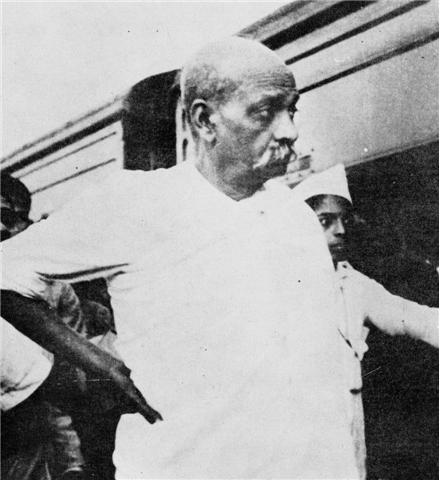
This
man of steel learnt early to be tough, for he was born as a middle
child in a family of impoverished peasant proprietors. As Vallabhbhai
would himself recall, his parents' hopes seemed centered on the eldest
two sons, Soma and Narsi, and their affection on the youngest two, Kashi
and the only daughter, Dahiba. The ones in the middle, Vallabh and
Vithal, were remembered last when clothes or sweets were to be
distributed, and at once when a chore had to be done. The rough schools
he went to as a boy, and the courts where he defended alleged criminals,
also contributed to Vallabhbhai's mental muscle and stern appearance.
Yet this tough man smiled at the world and at gloomy moments helped
others to laugh. Also, he did not hesitate to step aside for another
--for his older brother Vithal when the latter wanted to use his
passport and ticket to London, and, years later, for Jawaharlal Nehru,
when Mahatma Gandhi desired that Nehru should sit in a chair to which
Patel
seemed entitled. And this strong man before whom rajas and maharajas
trembled, and to whom rich men gave large funds for India's national
movement, did not allow a rupee to stick to his fingers, and he saw to
it that his children, a son and a daughter, lived simple lives during
and after their father's lifetime.
His strength of character, the sharpness of his mind,
his organizing skills, and all his energy were offered up for achieving
the freedom of India under Gandhi's leadership, and after independence
for India's consolidation. We admire a man who rises to a political or
financial peak, but are moved by one whose sole purpose in life is the
strength and wellbeing of his compatriots. And we are moved even more
when we discover that next to the steel in his soul is a tenderness for
colleagues and a readiness to accept whatever results God ordains. In
successive phases of his life, Vallabhbhai Patel showed
the defiance of the oppressed, a trial lawyer's brilliance, the daring
to give up a flourishing career, the discipline of a soldier in
freedom's battles, the strategies of a General, indifference as a
prisoner of the Raj, the generosity of the strong, the firmness of a
patriot, and the farsightedness of a statesman. If times are depressing
or daunting, Sardar Patel reminds us of India's and Indians' potential. When times are good, we can think of him with glad gratitude.













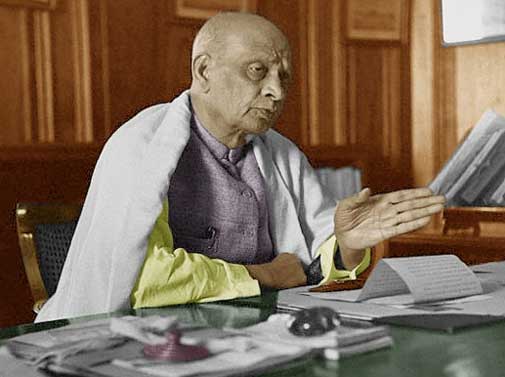
 This
man of steel learnt early to be tough, for he was born as a middle
child in a family of impoverished peasant proprietors. As Vallabhbhai
would himself recall, his parents' hopes seemed centered on the eldest
two sons, Soma and Narsi, and their affection on the youngest two, Kashi
and the only daughter, Dahiba. The ones in the middle, Vallabh and
Vithal, were remembered last when clothes or sweets were to be
distributed, and at once when a chore had to be done. The rough schools
he went to as a boy, and the courts where he defended alleged criminals,
also contributed to Vallabhbhai's mental muscle and stern appearance.
Yet this tough man smiled at the world and at gloomy moments helped
others to laugh. Also, he did not hesitate to step aside for another
--for his older brother Vithal when the latter wanted to use his
passport and ticket to London, and, years later, for Jawaharlal Nehru,
when Mahatma Gandhi desired that Nehru should sit in a chair to which Patel
seemed entitled. And this strong man before whom rajas and maharajas
trembled, and to whom rich men gave large funds for India's national
movement, did not allow a rupee to stick to his fingers, and he saw to
it that his children, a son and a daughter, lived simple lives during
and after their father's lifetime.
This
man of steel learnt early to be tough, for he was born as a middle
child in a family of impoverished peasant proprietors. As Vallabhbhai
would himself recall, his parents' hopes seemed centered on the eldest
two sons, Soma and Narsi, and their affection on the youngest two, Kashi
and the only daughter, Dahiba. The ones in the middle, Vallabh and
Vithal, were remembered last when clothes or sweets were to be
distributed, and at once when a chore had to be done. The rough schools
he went to as a boy, and the courts where he defended alleged criminals,
also contributed to Vallabhbhai's mental muscle and stern appearance.
Yet this tough man smiled at the world and at gloomy moments helped
others to laugh. Also, he did not hesitate to step aside for another
--for his older brother Vithal when the latter wanted to use his
passport and ticket to London, and, years later, for Jawaharlal Nehru,
when Mahatma Gandhi desired that Nehru should sit in a chair to which Patel
seemed entitled. And this strong man before whom rajas and maharajas
trembled, and to whom rich men gave large funds for India's national
movement, did not allow a rupee to stick to his fingers, and he saw to
it that his children, a son and a daughter, lived simple lives during
and after their father's lifetime.






